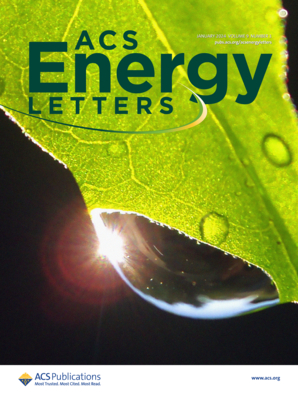Piezotronic Neuromorphic Devices: Principle, Manufacture, and Applications
IF 19.3
1区 材料科学
Q1 CHEMISTRY, PHYSICAL
引用次数: 0
Abstract
With the arrival of the era of artificial intelligence (AI) and big data, the explosive growth of data has raised higher demands on computer hardware and systems. Neuromorphic techniques inspired by biological nervous systems are expected to be one of the approaches to break the von Neumann bottleneck. Piezotronic neuromorphic devices modulate electrical transport characteristics by piezopotential and directly associate external mechanical motion with electrical output signals in an active manner, with the capability to sense/store/process information of external stimuli. In this review, we have presented the piezotronic neuromorphic devices (which are classified into strain-gated piezotronic transistors and piezoelectric nanogenerator (PENG)-gated field effect transistors based on device structure) and discussed their operating mechanisms and related manufacture techniques. Secondly, we summarize the research progress of piezotronic neuromorphic devices in recent years and provide a detailed discussion on multifunctional applications including bionic sensing, information storage, logic computing, and electrical/optical artificial synapses. Finally, in the context of future development, challenges, and perspectives, we have discussed how to more effectively modulate novel neuromorphic devices with piezotronic effects. It is believed that the piezotronic neuromorphic devices have great potential for the next generation of interactive sensation/memory/computation to facilitate the development of the Internet of Things, AI, biomedical engineering, etc.压电神经形态设备:原理、制造和应用
随着人工智能(AI)和大数据时代的到来,数据的爆炸式增长对计算机硬件和系统提出了更高的要求。受生物神经系统启发的神经形态技术有望成为打破冯-诺依曼瓶颈的方法之一。压电神经形态设备通过压电势调制电子传输特性,以主动方式将外部机械运动与电子输出信号直接联系起来,具有感知/存储/处理外部刺激信息的能力。在这篇综述中,我们介绍了压电神经形态器件(根据器件结构分为应变门控压电晶体管和压电纳米发电机(PENG)门控场效应晶体管),并讨论了它们的工作机制和相关制造技术。其次,总结了近年来压电神经形态器件的研究进展,并对仿生传感、信息存储、逻辑计算、电/光人工突触等多功能应用进行了详细论述。最后,在未来发展、挑战和展望方面,我们讨论了如何更有效地利用压电效应调制新型神经形态器件。我们相信,压电神经形态设备在下一代交互式感觉/记忆/计算方面具有巨大潜力,可促进物联网、人工智能、生物医学工程等领域的发展。
本文章由计算机程序翻译,如有差异,请以英文原文为准。
求助全文
约1分钟内获得全文
求助全文
来源期刊

ACS Energy Letters
Energy-Renewable Energy, Sustainability and the Environment
CiteScore
31.20
自引率
5.00%
发文量
469
审稿时长
1 months
期刊介绍:
ACS Energy Letters is a monthly journal that publishes papers reporting new scientific advances in energy research. The journal focuses on topics that are of interest to scientists working in the fundamental and applied sciences. Rapid publication is a central criterion for acceptance, and the journal is known for its quick publication times, with an average of 4-6 weeks from submission to web publication in As Soon As Publishable format.
ACS Energy Letters is ranked as the number one journal in the Web of Science Electrochemistry category. It also ranks within the top 10 journals for Physical Chemistry, Energy & Fuels, and Nanoscience & Nanotechnology.
The journal offers several types of articles, including Letters, Energy Express, Perspectives, Reviews, Editorials, Viewpoints and Energy Focus. Additionally, authors have the option to submit videos that summarize or support the information presented in a Perspective or Review article, which can be highlighted on the journal's website. ACS Energy Letters is abstracted and indexed in Chemical Abstracts Service/SciFinder, EBSCO-summon, PubMed, Web of Science, Scopus and Portico.
 求助内容:
求助内容: 应助结果提醒方式:
应助结果提醒方式:


